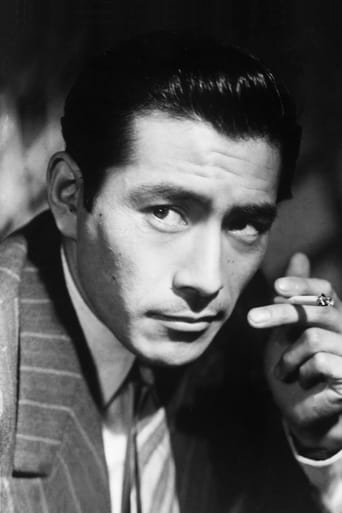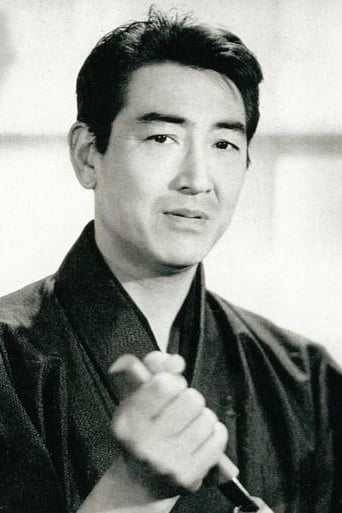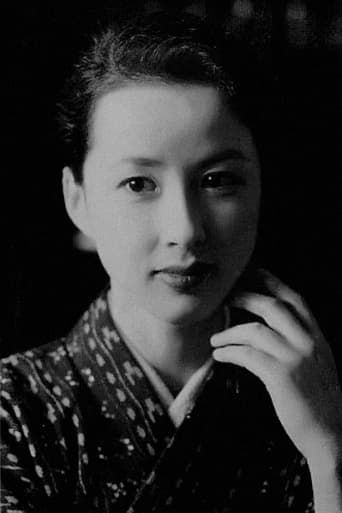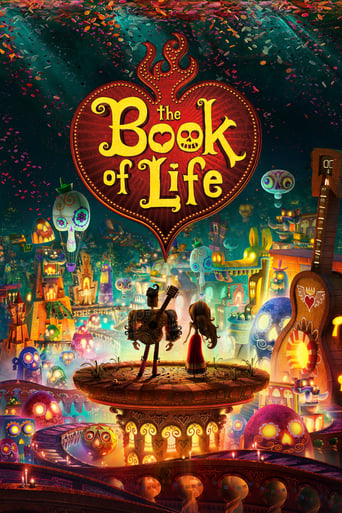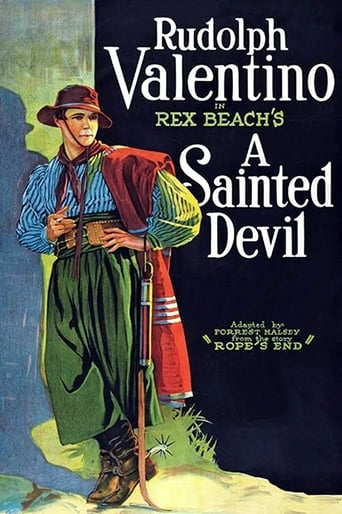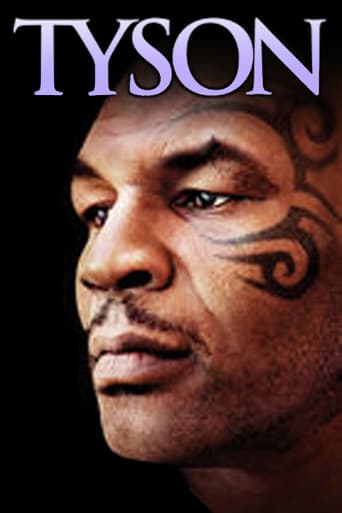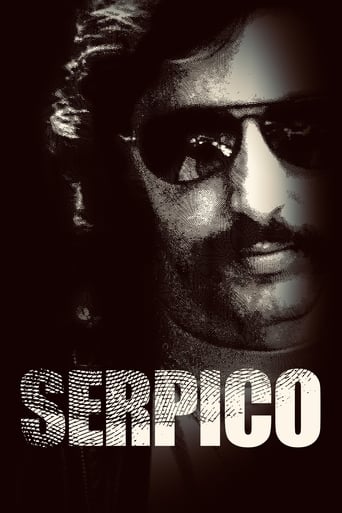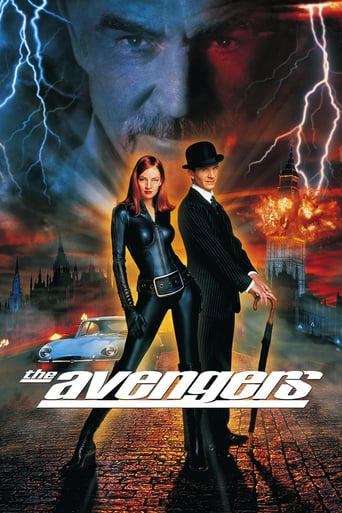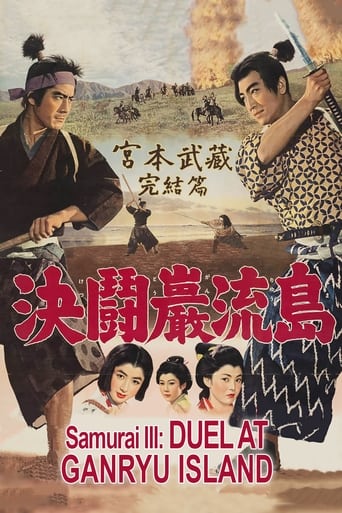
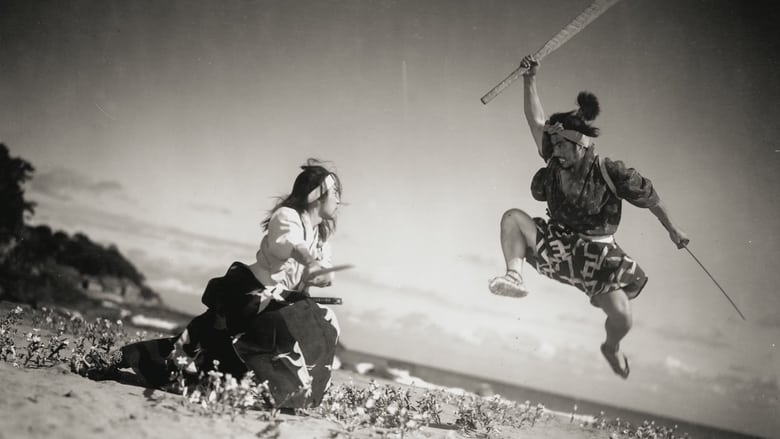
Samurai III: Duel at Ganryu Island (1956)
A humble and simple Takezo abandons his life as a knight errant. He's sought as a teacher and vassal by Shogun, Japan's most powerful clan leader. He's also challenged to fight by the supremely confident and skillful Sasaki Kojiro. Takezo agrees to fight Kojiro in a year's time but rejects Shogun's patronage, choosing instead to live on the edge of a village, raising vegetables. He's followed there by Otsu and later by Akemi, both in love with him. The year ends as Takezo assists the villagers against a band of brigands. He seeks Otsu's forgiveness and accepts her love, then sets off across the water to Ganryu Island for his final contest.
Watch Trailer
Cast


Similar titles
Reviews
I thought it was interesting as it was also a contrast between real life experience and the real deal, versus one who learns from books. Takezo's fame and fortune comes from the countless of duels he had overcome, and each dispatching of an opponent builds upon his reputation. For Kojiro's case, here's one lesser known samurai, no doubt skilled as we learn from Part 2 in his attainment of a certificate from a top school, but knows no fame like Takezo's. While he is competent, many such as the Shogun still seeks out the tried and tested for his troops' training, preferring very much someone who has shown mettle from his battle scars, versus a textbook warrior. Hence Kojiro's envy just grows to a level of a glory seeker where he takes a step forward, and issues a duel challenge. Kojiro's evilness becomes more pronounced here, in the way he kills just to lure our hero out.We continue to see the mellowing changes to Takezo, in a very restraint introduction in a fight sequence no less, and quite unlike his younger, brash self, there's a very different, almost Zen approach to various situations, though still no pushover if the situation calls for his drawing of the sword. His skills have grown considerably, and in a key scene we see him gaining admiration without physical violence, and earns a disciple in the process. In this installment, an episode with the Lord Shogun's teacher puts him off totally, where he learns of there being no glory in dead men, that he turns toward a higher calling, to help poor villages in need of protection against bandits, in a sort of Seven Samurai way. Hence his turning back to a dream of being a farmer, and with his estranged lover Otsu (Kaoru Yachigusa) joining him in an attempt for reconciliation, Takezo has his hands full with their brand of restrained emotional love getting a little more airtime, though at least it results in closure from the open-endedness in the second film.There are still a number of shortcomings of course, and it stemmed from the introduction of characters in the final arc of the story, such as Kojiro's lover Omitsu (Michiko Saga), who serves little purpose than to pepper the trilogy with yet another weak woman character (though of course, quite in line with the times), and for her and her family to serve some pride in having Kojiro as a relative-to-be after his appointment by the Shogun. Little is seen beyond the demonstration of class, and for conversational pieces with Kojiro to highlight his inner desire and turmoil. Takezo's childhood friend Matahachi (Sachio Sakai) also gets conveniently forgotten here, despite my feeling that he could have played a larger role in the lead up to the finale. But he's relegated to a support character, undeserving of a proper sending off.The most startling development belonged to Akemi (Mariko Okada), the tragic character whose unrequited love gives her new found strength to do something quite despicable in the series. As the adage goes, hell hath no fury like a woman scorned, and although the character becomes somewhat negative in her outlook, with vengeance and jealous rage clouding her mind, it's a far cry from the helpless, innocent lass that she started out as, no thanks to a shameful episode from the past that pushed her somewhat over the edge of desperation, especially when her dreams and hopes get dashed, being a character cornered. While some would like to argue that the best fights are to be found in the second film of the series, I thought the ultimate one, happened to be here (saving the best for last of course), where 2 top pugilist arrange to meet in a death match, each understood that the other stands in their way to claim top honours. And the steady progression made by Takezo can be demonstrated none other than his carefully crafted weapon while en route to the fabled Ganryu island, where he takes a wooden oar and shapes it into his final weapon of choice.I thought this had plenty of significance in pugilistic stories of the East. Famed swordsman usually has precious swords in their possession, and one of the best in Chinese author Louis Cha's folklore is - whose name I literally translate - "Lonely, Seeking Defeat", a top pugilist who nickname spells out his frustration at being alone at the top, and without an opponent of his equal to spar with. Amongst the weapons that he has at the time of death include a humongous iron sword, and a humble wooden one. I suppose the latter will be one's weapon of choice just because one has no need of weapons that could maim or kill. Only a confident exponent would choose to utilize a weapon from that material against an opponent with a conventional weapon, and Takezo through this simple aspect, has shown supreme assuredness over Kojiro Sasaki's long katana "Clothes Rod", and his famed move, the "Swallow's Tail".So what's my verdict of the Samurai Trilogy? It's a lot better than expected despite the transfer showing the age of the film. It moves at snail's pace no doubt, but has a couple of highly intense, though at times short, fight sequences that are still capable of wowing a modern audience. At its core, a solid story about a legend's life from zero to hero, and a transformation within himself in order to pursue a higher calling.
This is the third part of a comment on The "Samurai Trilogy," following those on the pages for Miyamoto Musashi (Samurai I) and Ichijoji no Ketto (Samurai II). Ketto Genryujima (Duel at Genryu Island) can be seen as part 1 come full cycle, as the young Kojiro seeks validation through a confrontation in arms with Musashi. In fact this is mostly his movie in spite of Mifune's top billing, and Musashi's love interest Otsu is likewise partially eclipsed by her rival and foil Akemi and her machinations. The climactic finish is deferred many times, but each bit of side action comes forth with a sense of necessity, and its ethical principle is illustrated in a way that comes naturally from the context, and is not imposed with a didactic tone. By the time the duel happens, both participants have grown as men-- appreciative of the grand scheme of things, humbled by the small part they play, and respectful of each other. We do see the hateful side of the "bad guy," but such glimpses are then followed by an honorable act of some sort, or by evidence that he has reflected on his methods, and come to see a better way he should've followed. Inagaki's films, especially these three, have always been the best-regarded of the "classy" samurai movies-- I lived in Japan during the time these films were made, and I can tell you there were plenty of "trashy" ones! Today's pulp doesn't hold a candle. However seriously these films were taken in Japan, in the west there's been a tendency to pigeonhole them as samurai flicks, and the trilogy is only recently being seen as one major work, though I've still yet to see it shown all at once, as a single entity. Why that is, I'll never know, as the whole thing is uniform in quality, and the parts work as an epic accumulation as well as they stand on their own. The first episode did win the Oscar for best Foreign-language film, but interest in the rest of the trilogy was sporadic-- the films were issued and re-issued under generic-sounding names over the years, and when spoken of together it was in an off-putting way, simply as Samurai 1, 2 and 3. But Inagaki's masterpiece is the capstone of a distinguished career that began in the prewar silent era, and though he was deemed too "Japanese" and too specialized in Bushido culture and the prewar past by western critics, this work transcends all those inapt criticisms and is very satisfying fare to native and foreign viewer alike-- I am delighted to present the intact trilogy in support of these claims. (Look for it on YouTube, on the cuFFBlinks channel).
The Samurai series is one of my favorites. Toshiro Mifune is by far one of the most classic and amazing Japanese actors of the screen, and he outdoes himself in the Samurai series. The colors, the settings of these films are amazing, and part III, with it's wonderful dual at Ganryu Island, is by far one of the most well-planned and conducted films in history. If you have not seen this series, you need to; it need not matter if you are a Samurai film junkie or just a cinemaphile, you will enjoy the subtle touches that make this one of the finest trilogies in film. I'd also suggest seeing Yojimbo, Sanjuro and of course the Seven Samurai; other great titles are "The sleepy eyes of death" and The Lone Wolf and Cub series.
I think this is the best movie of the series--and certainly more satisfying than its predecessor.It is important to note that these movies were made nearly 50 years ago and existing copies on DVD are in poor condition--with fading and sepia tones instead of the vibrant original. This became VERY apparent when I saw the beginning of the 3rd film. The color was nearly perfect for the initial scene and that is great, as it's a beautiful and extremely artistic shot. At times throughout the movie, some of the scenes are once again vivid while others are faded and lose their impact. You can't blame the film for that, but you wish Criterion would try to digitally enhance the prints they've got to improve the colors and get rid of some scratchy cels.Back to the story, Mifune's character is nearly perfected in his quest to become the ultimate samurai. Throughout the last film and this one, another incredibly great samurai played by Koji Tsuruta is itching for a showdown to the death. But, because Mifune is more mature and no longer needs this for validation, he repeatedly tries to avoid the fight--after all, what does he have to prove? Of course, you KNOW this showdown must take place and it is a very satisfying conclusion. Along the way, Otsu returns and swears her undying love for him. I felt really bad for her, as she has waited YEARS for him and I certainly wouldn't have put her off like he did! Sorry about that.Oh yeah, anyways the conclusion really delivers and the film makes the trilogy all worth while.


